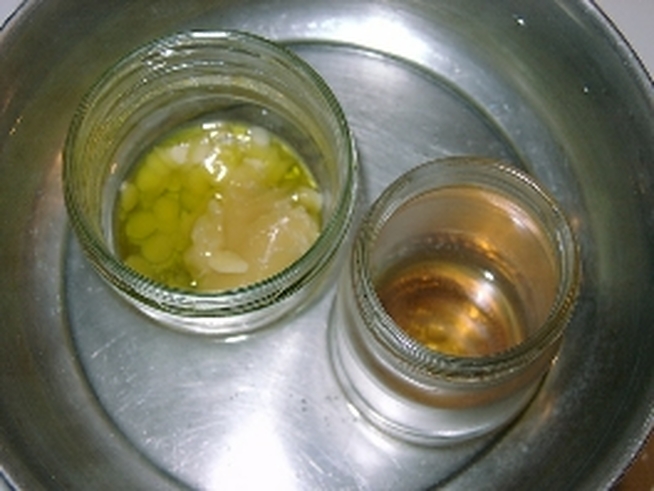 Lanolin, beeswax and almond oil (or hemp oil or other oil) makes a light, nourishing skin cream
Lanolin, beeswax and almond oil (or hemp oil or other oil) makes a light, nourishing skin cream Putting together soaps and lotions is easily attainable for most and really is better for the family. Chemicals do not need to be part of our toilet routines. It is tempting to buy Rosewater form Bulgaria, Ukubu butter from Africa, and Lavender from France, to make wonderful products for the skin. These are fair trade goods too, but that still does not make the acquisition of them a sustainable resource. Why did lanolin fall out of favour? Why is shea butter so much in favour? The difference is that lanolin is the grease from a sheep's wool and that is not something that women, in particular, have been trained to accept as a beauty product. Lard, or other animal fats, were also used to soften the skin and provide protection as a barrier cream. Today, I do not know a single person who would put lard willingly on her face, but I have. Lard soap is mild and makes a long lasting hard white bar that is a pleasure to use. In creams it tends to go rancid rather quickly as compared to tropical butters, but it is equally as good at doing the job. Hemp oil is produced in large quantities in Canada and yet we do not hear about it much. Not only is it superior for ingestion and health, but it is superior for skin preparations as well. So, in view of keeping ingredients more local, I will concentrate on using hemp and lanolin and beeswax to make skin care. Selling these may take some time and education, but there are a handful of followers who are interested in sustainable resources as well. It just takes one person to get the ball rolling. I guess I will give it a try.

 RSS Feed
RSS Feed